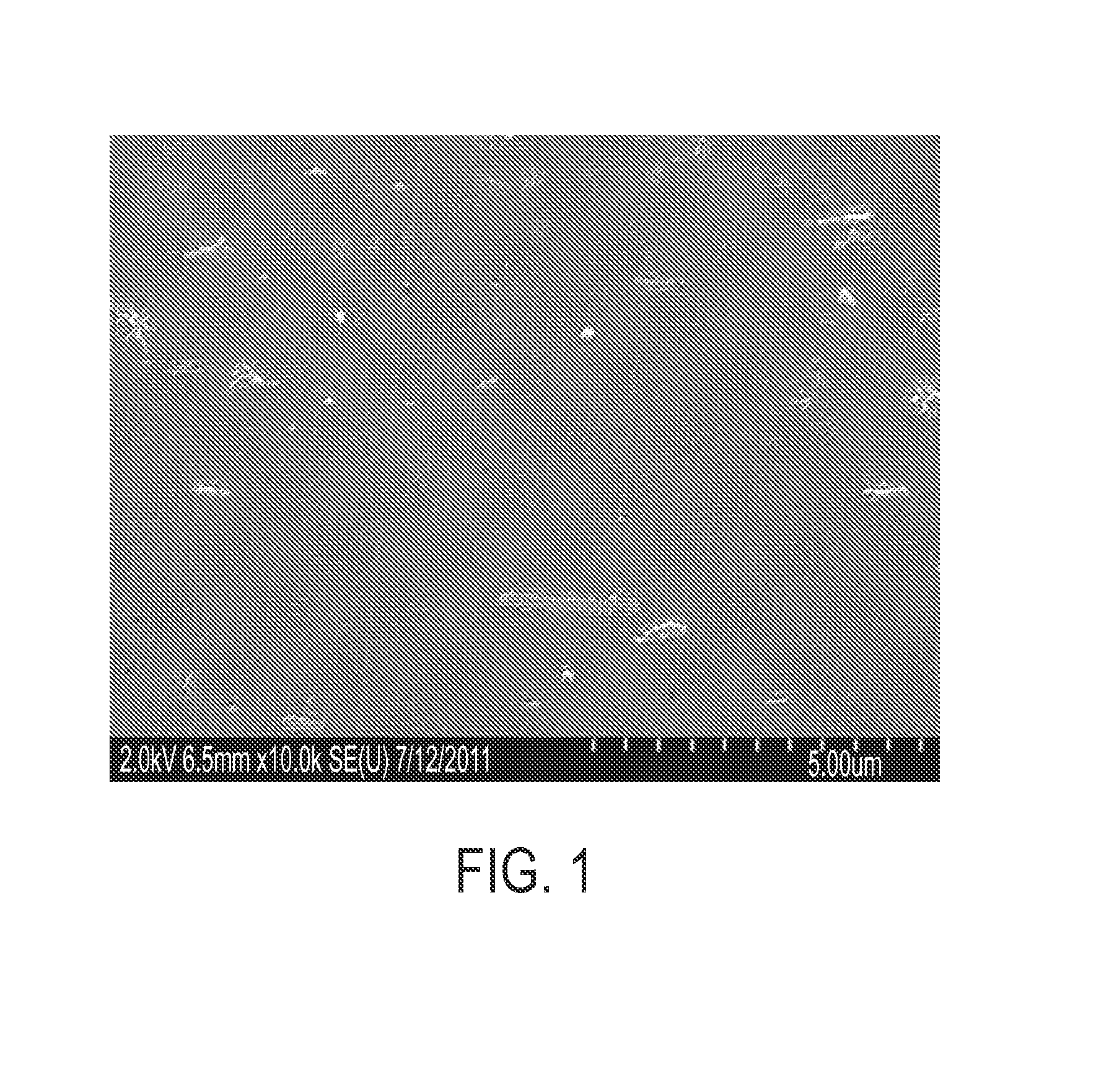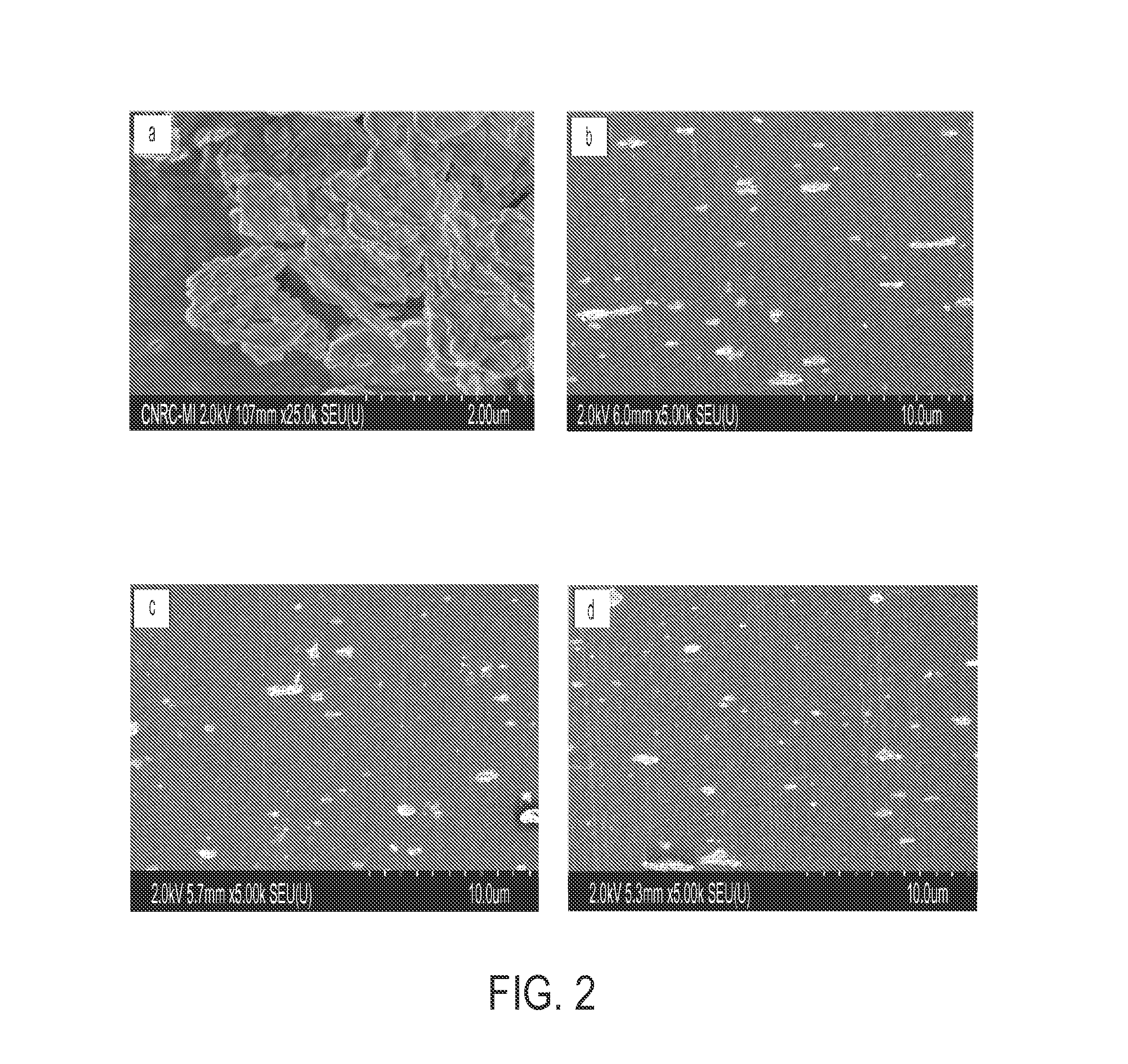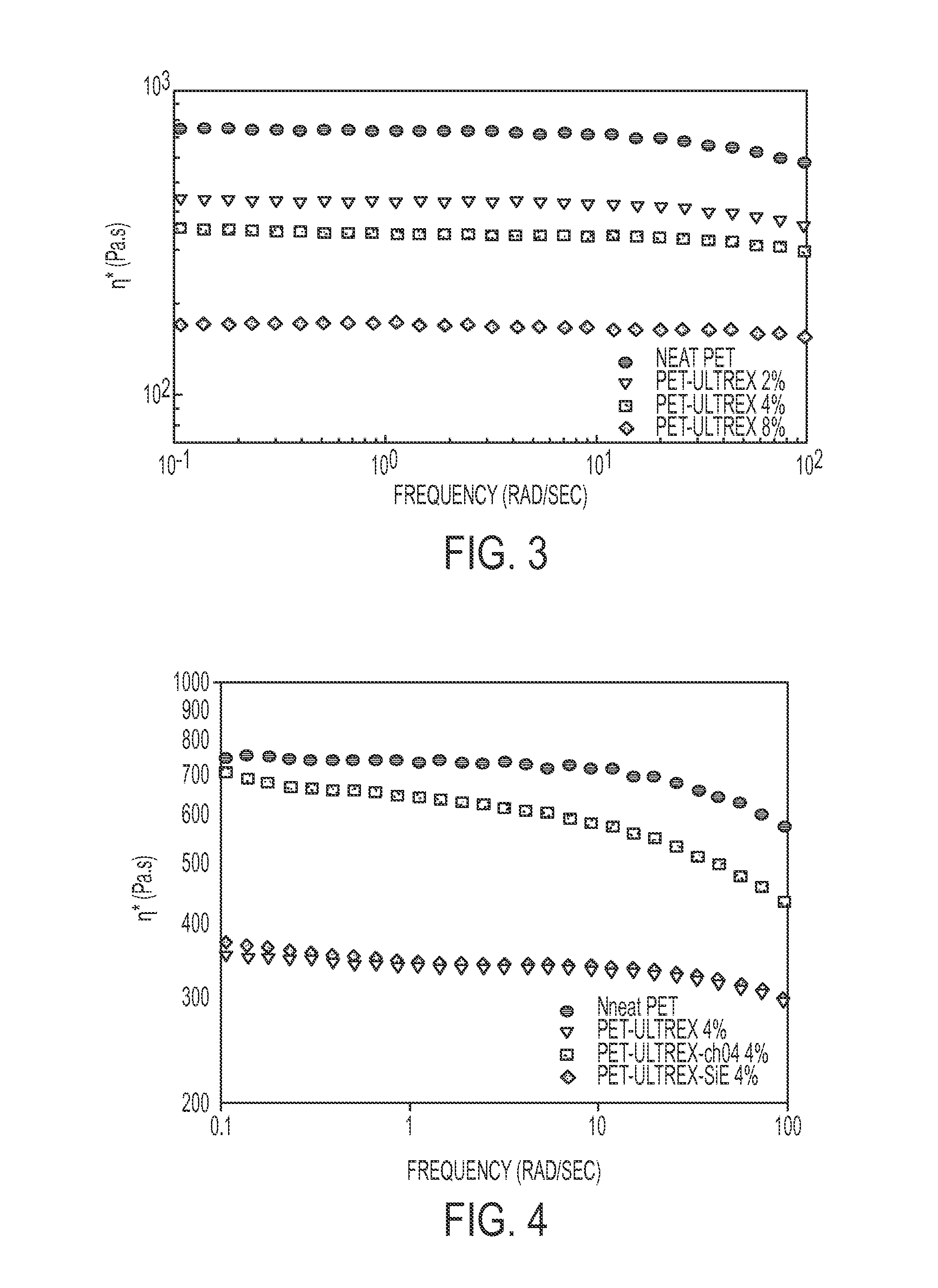Pet nanocomposite materials and containers prepared therefrom
a technology of nanocomposite materials and containers, applied in the directions of transportation and packaging, rigid containers, packaging, etc., can solve the problems of low barrier and mechanical properties, economic and environmental impacts, and mainly non-biodegradable materials, so as to improve the transparency or barrier properties, improve the physical properties, and improve the many properties of materials
- Summary
- Abstract
- Description
- Claims
- Application Information
AI Technical Summary
Benefits of technology
Problems solved by technology
Method used
Image
Examples
example 1
Kaolin Nanocomposite PET Structure
[0048]The starting materials used in the process of making a PET structure according to one embodiment include a bottle grade PET resin and commercial kaolin clay. Particularly in this example, a bottle grade polyethylene terephthalate (PET) resin Laser+®-7000 with an intrinsic viscosity of 0.84 dL / g, a melting point of 242° C. and 35% crystallinity was used. This bottle grade PET is commercially available from DAK Americas LLC. The commercial kaolin, hydrous aluminosilicate used in the present example has a density of 2.58 g / cm3 at 25° C. with a particle size of (D90<2 μm). This commercial kaolin is commercially available from BASF Corporation. Other materials used in the present example include (1) potassium acetate (KAc), (2) 3-aminopropyl triethoxysilane, and (3) PET chain extender (30 wt / %). All of these chemicals are commercially available. KAc is available from Sigma-Aldrich, and 3-aminopropyl triethoxysilane is available from Acros Organics....
example 2
Calcined Kaolin Nanocomposite PET Structure
[0052]A commercial grade PET resin (Laser+® 7000) with an intrinsic viscosity of 0.84 dL / g provided by DAK Americas LLC was used as a polymer matrix. A commercial calcined grade kaolin (Ultrex® 96) from BASF Corporation was used. It is a dehydroxylated aluminosilicate with a density of 2.63 g / cm3 (at 25° C.) and an average particle size of 1.2 μm. In order to raise the melt viscosity and molecular weight of the PET resin, an FDA-approved masterbatch of PET with a chain extender from Polyvel Inc., was added during the melt mixing. A silane coupling agent, 3-(glycidoxy-propyl) trimethoxysilane supplied by Gelest was used for silanization of the surface of particles.
[0053]A Hitachi S4700 SEM instrument with a cold field emission gun under an acceleration voltage of 2 kV was used to examine the morphological characteristics of the composites. The samples were microtomed using an Ultracut FC microtome (Leica, Germany) with a diamond knife and go...
example 3
Phenoxy-Modified CKao Nanocomposite PET Structure
[0083]The PET resin used in this study was Laser+® 7000 supplied by DAK Americas LLC. It is a bottle grade PET resin with an intrinsic viscosity of 0.84 dL / g, a melting point of 242° C. and 35% crystallinity. The filler was a calcined grade kaolin with a specific gravity of 2.63 g / cm3 supplied by BASF Corporation. Sodium hexametaphosphate (SHMP), purchased from Sigma-Aldrich, was added to the grinding media, to prevent agglomeration in the grinder. Phenoxy resin additive (PKHA), a linear poly hydroxy ether provided by InChem Corporation, was used in this work to modify the molecular weight of PET. Analytical grade sodium hydroxide (NaOH) and nitric acid (HNO3), purchased from Sigma-Aldrich, were used as pH regulators.
[0084]Scanning electron microscope (SEM) microphotographs were obtained using in a Hitachi S4700 instrument with a cold field emission gun under an acceleration voltage of 2 kV. A JOEL JEM-2100F transmission electron micr...
PUM
| Property | Measurement | Unit |
|---|---|---|
| Transparency | aaaaa | aaaaa |
Abstract
Description
Claims
Application Information
 Login to View More
Login to View More - R&D
- Intellectual Property
- Life Sciences
- Materials
- Tech Scout
- Unparalleled Data Quality
- Higher Quality Content
- 60% Fewer Hallucinations
Browse by: Latest US Patents, China's latest patents, Technical Efficacy Thesaurus, Application Domain, Technology Topic, Popular Technical Reports.
© 2025 PatSnap. All rights reserved.Legal|Privacy policy|Modern Slavery Act Transparency Statement|Sitemap|About US| Contact US: help@patsnap.com



